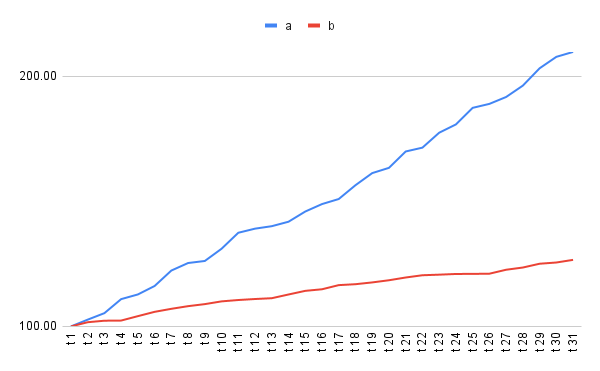"correlation" has to be one of the most commonly used terms in the business and finance world. It facilitates the communication of ideas and gives the speaker just enough to sound sophisticated but not pedantic.
The trouble is: we haven't stopped and asked ourselves "what we talk about when we talk about correlation?"[1]
they don't know correlation
And I bet most folks have it wrong. They think that if the movements of Juan and Jorge are positively correlated, then:
- Each time Juan takes 100 steps to the west
- Jorge takes 100 steps to the west
Which is not incorrect, but they fail to grasp that the following also gives the exact same correlation factor:
- Each time Juan takes 100 steps to the west
- Jorge only takes 1 step to the west
so what?
In day-to-day meetings and coffee chats, no big deal, but when it comes to making investing or hedging decisions, beware.
Policy guidelines or "smart" strategists may call for proxy-investing or proxy-hedging in the name of cost-effectiveness. And they may be only looking through the lens of correlation.
These two investments have a correlation coefficient of 0.99. What could go wrong with investing in asset b as a proxy for asset a? :)

backstory: "correlation only looks at direction, not magnitude"
The light bulb didn't go off in my head during a solitary hike at Malibu Creek, it actually was during a meeting with my friends at Prudential Fixed Income back in the days of the financial crisis. We were looking at a high-yield portfolio and I kept saying "correlation this" and "correlation that", until the great Mike Collins stopped and schooled me:
"Luis, correlation only looks at direction, not magnitude. You need to think about both."
notes
- the great Raymond Carver is one of my favorite American writers ↩︎